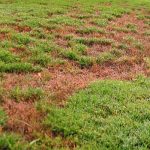Seeds are the simplest way to propagate fresh plants. Though not exact duplicates of their parents, plants grown from seeds will exhibit a combination of its parents’ genes, making this is an easy method for obtaining new plant varieties.
If you’re collecting your own seeds, clean and spread them in thin layers and stir occasionally to allow uniform drying. Label them by name and date collected, and then store until you’re ready to plant. Even seeds purchased from a vendor should be checked for freshness; look for the date on the package.
Some seeds need pretreatment to soften the seed coat, break dormancy and allow germination. The method depends on seed type and time of year. Common strategies include:
- Cold stratification – Exposure to a few months of cold temperatures.
- Scarification – Cracking or thinning the outermost layer of the seed.
- Hot water treatment – Immersion in near boiling water, followed by tepid water.
You can grow your seeds indoors or sow them directly into the garden. Indoors, use small pots or flexible trays with holes for drainage. Compact the soil with a spatula and lay the seeds on top. Cover the seedbed with transparent plastic to retain moisture. Uncover every few days to allow ventilation.
Sowing seeds in the ground requires soil that’s soft, loose and enriched with compost or peat and sand.
Seeds typically take two to six weeks to germinate. Once they’ve begun, move them to a brighter location, and enjoy the fruits of your labor.




